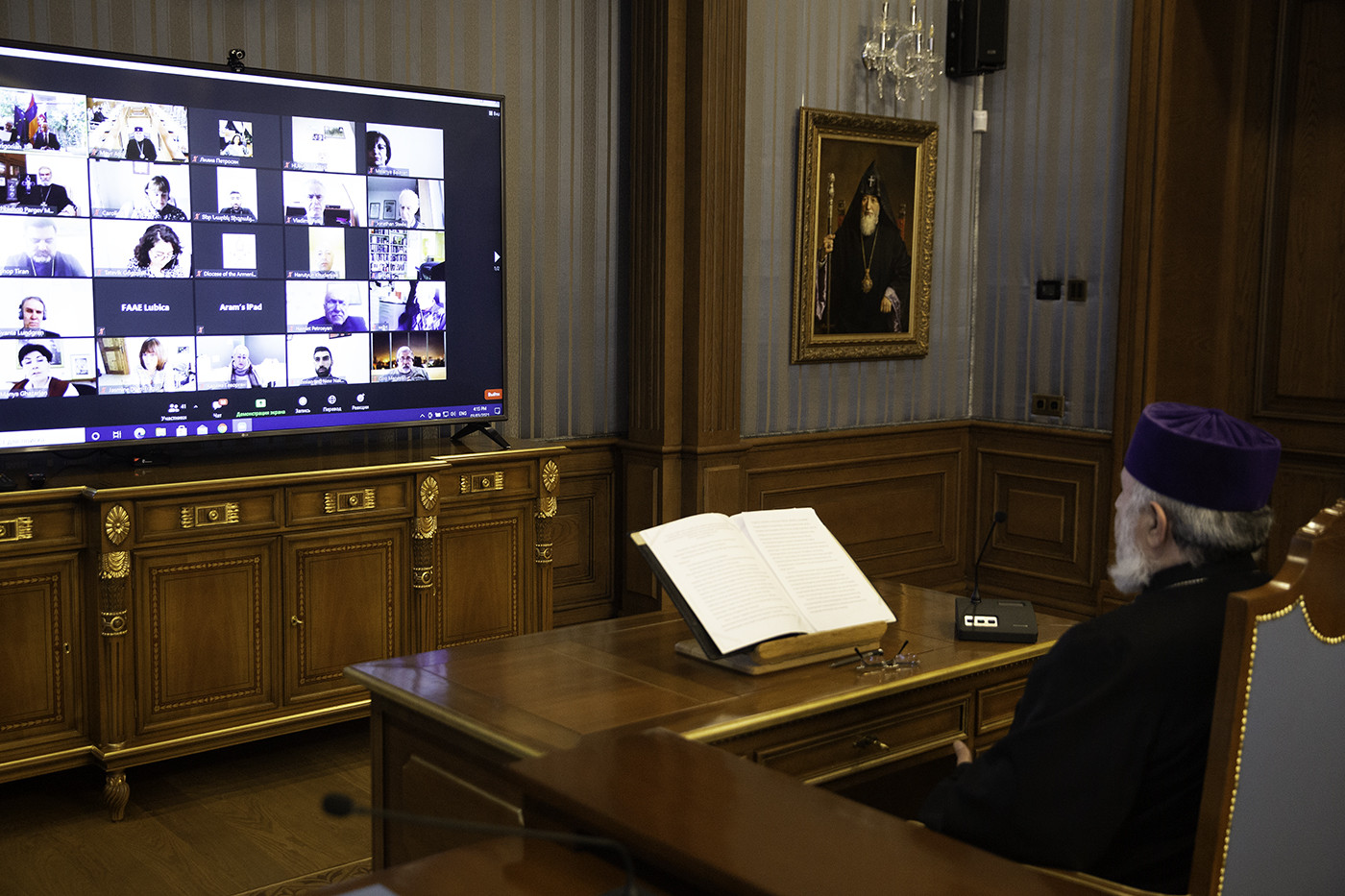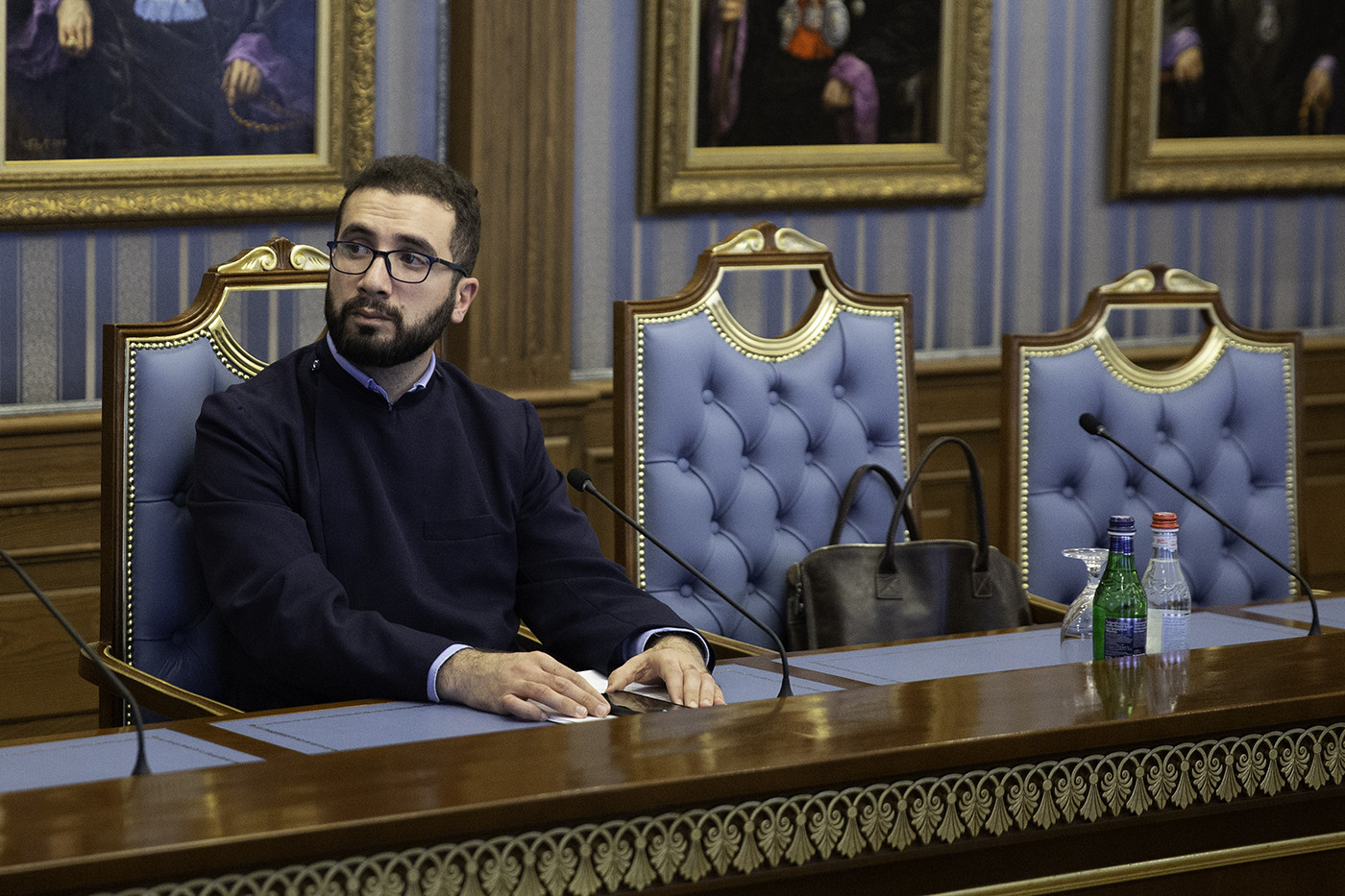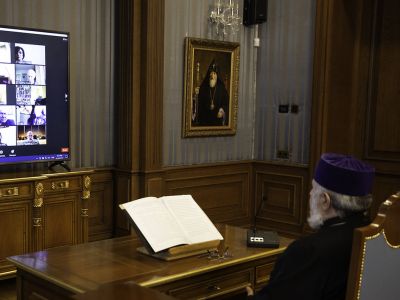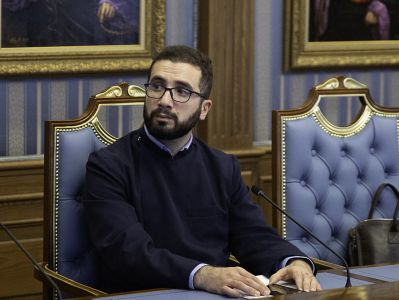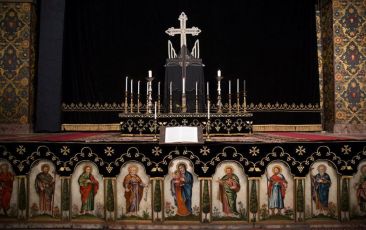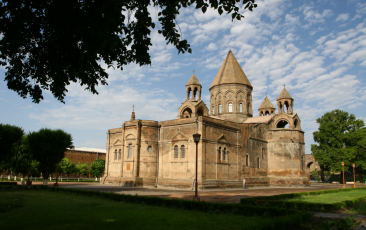The Catholicos of All Armenians Participated in the Online Symposium Entitled "Christian Historical and Cultural Heritage of the Peoples Living in the Armenian Highlands and Adjacent Territories"
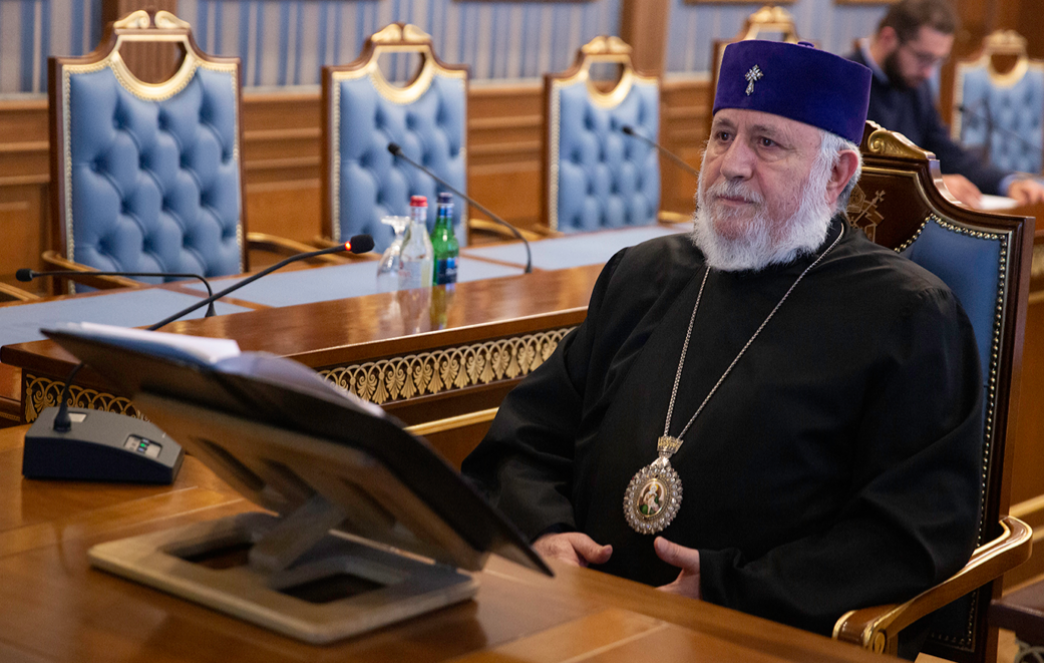 03.03.2021
03.03.2021
On 03 March, His Holiness Karekin II, Supreme Patriarch and Catholicos of All Armenians, Participated in the Online Symposium Entitled "Christian Historical and Cultural Heritage of the Peoples Living in the Armenian Highlands and its Adjacent Territories".
The Symposium was organized through the initiative of the Forum of Armenian Associations of Europe (Sweden), in collaboration with the Office on the Spiritual and Cultural Heritage of Artsakh of the Mother See, the “Vienna Club” Pan-European Center for Political and Economic Analysis, and the PANAP Peacekeeping Alliance (Slovakia).
Co-chairmen of the Symposium were His Grace Bishop Tiran Petrosyan, Pontifical Legate of Central Europe and Sweden, Mr. Mikhail Piotrovsky, Director of the Hermitage Museum in Saint Petersburg and Mr. Ashot Grigorian, president of the Forum of the Armenian Associations of the Europe (FAAE).
During the two-day symposium, more than two dozen reports will be made by renowned scholars, public figures, and clergymen from Armenia and abroad.
The conference was opened with the message by His Holiness Karekin II, Supreme Patriarch and Catholicos of All Armenians during which the Pontiff extended his blessings and appreciation to the organizing committee, the speakers and the participants.
THE MESSAGE OF HIS HOLINESS, KAREKIN II, SUPREME PATRIARCH AND CATHOLICOS OF ALL ARMENIANS,
ON THE OCCASION OF THE OPENING OF THE SYMPOSIUM
(March 3)
Your Grace,
Dear Co-chairmen, honorable participants of the Symposium,
From the Mother See of Holy Etchmiadzin, the Spiritual headquarters of the Armenian Church, we bring our pontifical blessing and greetings to all of you.
The convening of this conference is especially timely today, as months ago Azerbaijan unleashed a war against the Republic of Artsakh backed by Turkey, using terrorist groups. Many of the Armenian historical -cultural monuments and churches were damaged during the war. For centuries, our people, strengthened by their national identity and values, have built their lives in their homeland, built magnificent churches, created unique manuscripts, and exquisite works of art and education. The heritage of Artsakh, as an inseparable part of the Armenian culture, has greatly enriched both the Armenian and the world cultural treasury with its unique great contribution.
Today, however, the fate of Artsakh's centuries-old heritage is again in jeopardy in the occupied territories and regions ceded to Azerbaijan as a result of the war. Unfortunately, since November of last year, official Baku has been blocking the UNESCO initiative to send specialists to Artsakh to assess the state of the Armenian cultural and spiritual heritage. In this regard, the Mother See, the states of Armenia and Artsakh and non-governmental organizations have appealed to the relevant international institutions, heads of states, to do everything possible to ensure the protection of our centuries-old national heritage, our sanctuaries, our monasteries and churches, thousands of khachkars, and to prevent their destruction.
Azerbaijan's tendency of destroying everything related to the Armenians is manifested in its condemnable attitude towards human life too. There are many cases of violation of the norms of international humanitarian law. Azerbaijan renounces its obligation to exchange prisoners of war on a "all-for-all" basis, declaring those soldiers who were captured after the war in the forests, unaware of the declaration of cessation of war, or in their positions, as saboteurs.
It is evident that the Azerbaijani authorities are doing everything to appropriate the Armenian heritage at all costs, trying to erase the Armenian trace and the Armenian presence in the land of Artsakh. The complete destruction of numerous khachkars (cross stones) in the centuries-old Armenian cemetery in Nakhichevan, and the disproportionate reaction of the international community to it, have given Azerbaijan reason to believe that the cultural genocide can go unpunished. This is evidenced by the fact that during the recent war, the All Savior Ghazanchetsots church in Shushi was shelled twice. The domes of St. John (Green Church) Church, the Armenian monuments of Talish, the khachkars of Kataro Monastery on the top of Dizapayt Mountain in the village of Arakel, those of Hadrut region, were destroyed. In addition, there is a dangerous tendency for Azerbaijan to distort the historical facts of millennia-old Armenian culture, particularly those related to the ownership of church buildings in Artsakh. For this insidious purpose, theses that have no historical basis are presented with a goal to show the Armenian churches and sanctuaries as heritage of Caucasian-Afghan origin. Azerbaijan is pursuing a new policy of appropriation of the Armenian heritage, the manifestations of which we have witnessed recently.
In this regard, it is imperative today to take impartial academic approach in the face of the Azerbaijani policy of falsification of history. Esteemed participants, it is highly valued that you attend this Symposium, as you all, being well aware of the history, can make the international community more aware of the Christian heritage of Artsakh, the region, its origins, as well as the possibility and necessity of preservation of the heritage.
We extend our blessings and appreciation to the organizers of the symposium and to all your participants again, we wish you all good health, success in your commendable activities, and good progress in the work of the symposium.
Karekin II
Catholicos of All Armenians
